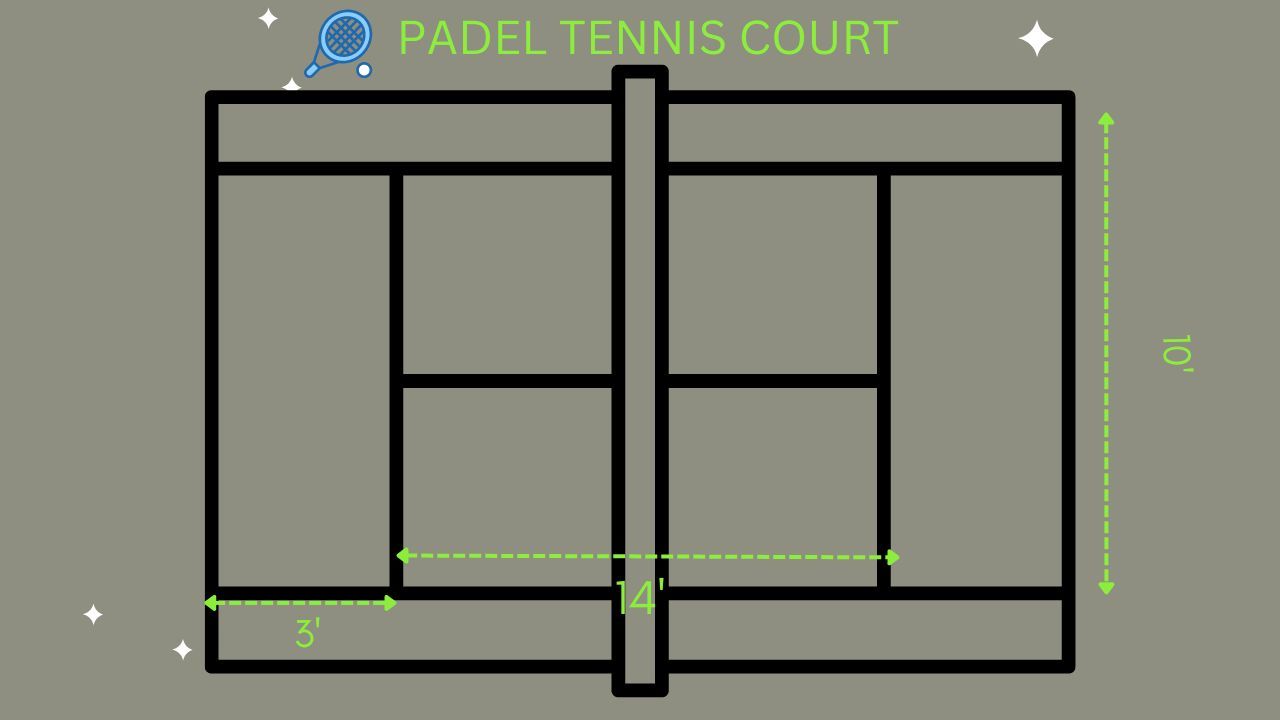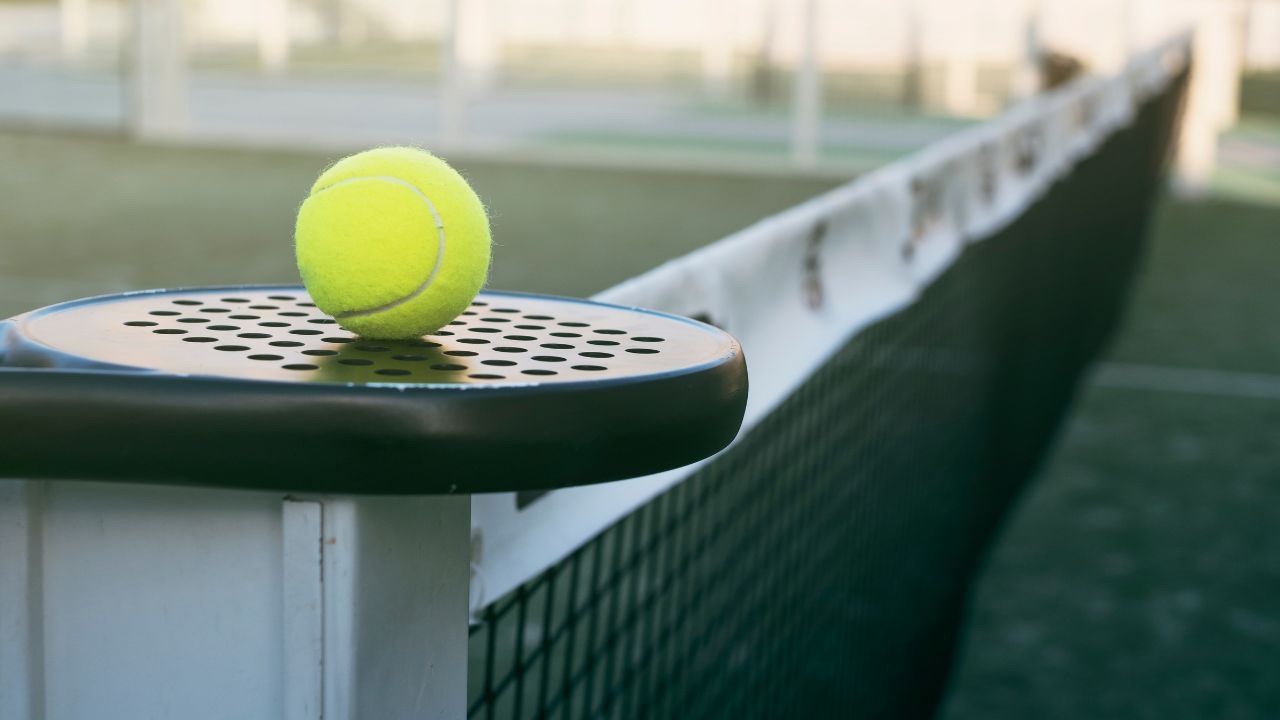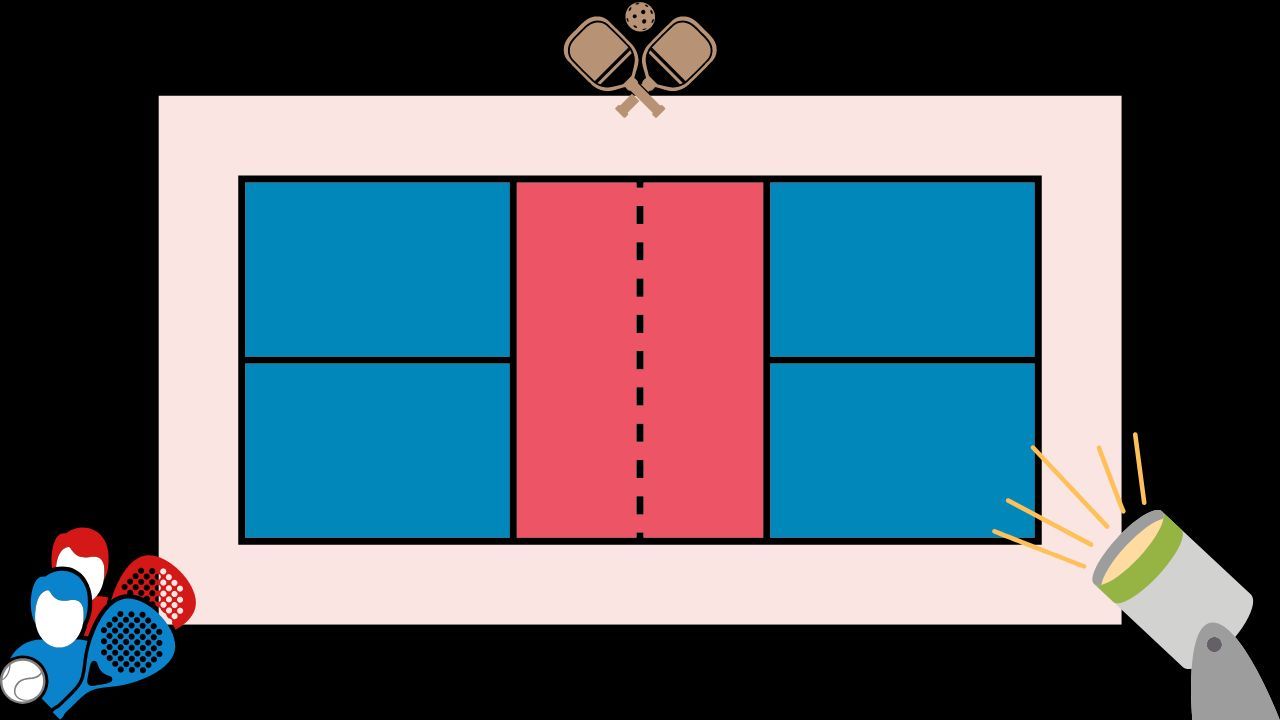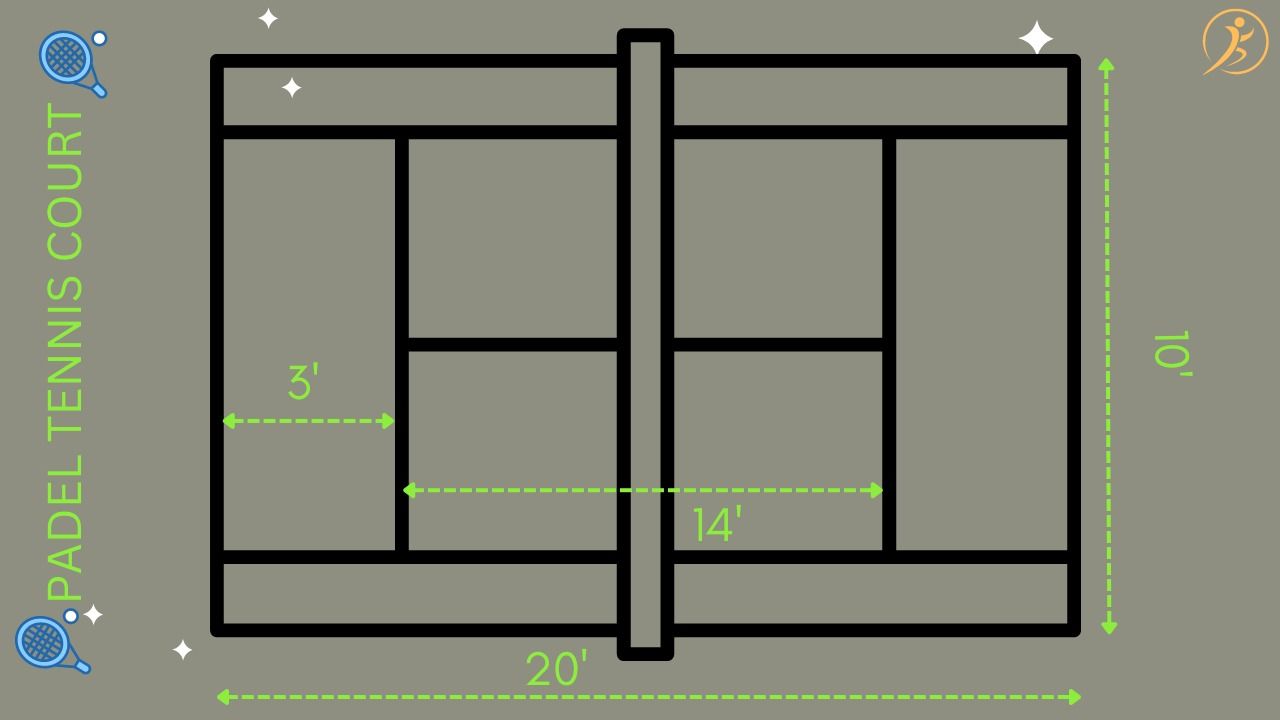The Enchanting Secrets of the Padel Tennis Court!
Discover the captivating secrets of Padel tennis courts, from their unique design to the exciting game dynamics that make this sport a growing global sensation!

Ever Wondered Where the Padel Magic Happens? Step onto the Enchanting Padel Tennis Court! 🌟
Ah, the Padel tennis court – it's like stepping into a fantastical fairy tale, where you'll discover that tennis and squash had a secret love child named Padel, and its court is the heart of the story!
The Padel tennis court is a captivating playground for players of all ages and skill levels! But wait, there's more! In this article, we'll unlock the secrets of the Padel tennis court, from its unique layout to the quirky glass walls that send balls on delightful adventures.
Oh, and did you know the Padel tennis court has its very own realm of lingo? Fear not, brave readers! We'll guide you through the fascinating jargon, so you'll be speaking Padel like a seasoned pro in no time!
It's a place where dreams take flight, laughter is the secret ingredient, and the last thing you'll need is a magic wand – just a pair of paddles and an eagerness to experience the pure magic of Padel!
What Is A Padel Tennis
Padel tennis, commonly known as padel, is a racket sport that combines elements of tennis, squash, and badminton. It is played on a smaller court enclosed by glass walls on all sides, creating a unique and dynamic playing environment. Padel is typically played in doubles, but singles matches are also possible.
The objective of padel is similar to tennis – to score points by hitting the ball over the net into the opponent's half of the court in a way that the opposing team cannot return it successfully. Players use solid paddles and a unique ball with holes, similar to a wiffle ball, to rally and score points.
Key features
Its ability to use the glass walls to bounce the ball, adds an extra element of strategy and excitement to the game. Players can strategically play the ball off the walls, making Padel a fast-paced and dynamic sport that requires quick reflexes, precision, and teamwork.
Padel is known for its social and inclusive nature, making it a sport that can be enjoyed by people of all ages and skill levels. Its unique court design and engaging gameplay have contributed to its growing popularity worldwide, with increasing numbers of players discovering and embracing the fun and thrill of padel tennis.
Padel Court Dimensions
Dimensions: 20 m - length x 10 m - width (approx. 65.62 x 32.81 feet)

The court is enclosed by glass walls on all sides, which are typically 3 meters (approximately 9.84 feet) in height. The court is divided into two halves by a net, and there is an 8-meter service box on either side of the net.
The Padel Net
The Padel net is a crucial component of the Padel court. It is a low-sitting net that divides the court into two halves, creating separate playing areas for both teams. The net is placed at the center of the court and spans the entire width, which is 10 meters (approximately 32.81 feet).
Height: 88 cm (approximately 34.65 inches) x 92 cm (approximately 36.22 inches) at the center.

The Padel net is designed to be slightly lower than the net used in traditional tennis, allowing for dynamic and exciting gameplay.
Access To The Padel Court
Access to the Padel court is typically through sports clubs, recreational centers, or public facilities that have dedicated Padel courts.
Players can access the court by becoming members of the club or paying a fee to use the facility on a per-hour basis. Some locations may also offer the option of booking the court in advance.
Padel courts are becoming increasingly popular and more widely available, providing ample opportunities for players to enjoy the sport and embrace the thrill of the game.
Padel Court Lighting
Padel court lighting is an essential feature for enabling gameplay during low-light conditions, such as in the evenings or in indoor facilities. The lighting setup typically involves strategically placed floodlights around the court, ensuring even illumination across the playing area.

The lighting should comply with international standards, providing adequate brightness and minimizing glare to ensure players have clear visibility of the ball and the court lines.
Proper Padel court lighting enhances safety, allows for extended playing hours, and ensures a comfortable and enjoyable experience for players, regardless of the time of day.
Padel Tennis Court
FAQs
Q: What is the size of a Padel tennis court?
Answer: The size of a Padel tennis court is 20 meters in length and 10 meters in width. This translates to approximately 65.62 feet in length and 32.81 feet in width.

The court is enclosed by glass walls on all sides, typically measuring 3 meters (approximately 9.84 feet) in height. The court is divided into two halves by a net, and there is an 8-meter service box on either side of the net. The court is surrounded by a boundary fence with glass windows on the sides and the top of the fence.
Q: What are padel tennis courts?
Answer: Padel tennis courts are specially designed playing surfaces used for the sport of Padel tennis. Padel tennis is a racket sport that combines elements of tennis, squash, and badminton, played on a smaller court enclosed by glass walls. The courts have specific dimensions of 20 meters in length and 10 meters in width, with glass walls that are approximately 3 meters in height.
Padel tennis courts are divided into two halves by a net, and there are service boxes on both sides of the net. The sport is usually played in doubles, and players use solid paddles and a unique ball with holes, similar to a wiffle ball, to rally and score points.
These courts provide a fast-paced and dynamic playing environment, where players can use the walls to bounce the ball, adding an extra layer of strategy and excitement to the game. Padel tennis courts can be found in sports clubs, recreational centers, and public facilities, offering players a fantastic and engaging racket sports experience.
Q: Can I play Padel on a tennis court?
Answer: Yes, it is possible to play padel on a tennis court with some modifications. Padel and tennis courts share similar dimensions, and both sports use a net that divides the court in half. However, there are a few differences between the two courts that need to be addressed to play padel on a tennis court:
- Glass Walls: Padel courts have glass walls surrounding the playing area, which allow players to use them to bounce the ball during the game. Tennis courts lack these walls, so players need to adapt their gameplay to account for this difference.
- Screens or Fencing: To create a makeshift padel court on a tennis court, temporary screens or fencing can be installed along the sides and back of the court to mimic the glass walls of a padel court.
- Additional Markings: Padel courts have specific markings for the service boxes and service areas, which are different from the markings on a tennis court. Temporary markings can be added to the tennis court to indicate the correct areas for serving in the padel.
- Equipment: While playing padel on a tennis court, players would need to use padel paddles and a padel ball instead of tennis rackets and tennis balls.
- Adapted Gameplay: The absence of glass walls and the differences in court markings may slightly alter the gameplay and strategy in Padel when played on a tennis court.
It's important to note that while you can play padel on a tennis court with these adjustments, the experience may not be the same as playing on a dedicated padel court with glass walls. However, it can be a fun and creative way to enjoy the sport if a dedicated padel court is not available.
Q: Is padel court the same as tennis?
Answer: No, a padel court is not the same as a tennis court. While both sports are played on rectangular courts with a net dividing the playing area, there are significant differences between the two:

- Court Size: Padel courts are smaller than tennis courts. A standard padel court is 20 meters in length and 10 meters in width, whereas a tennis court is 23.77 meters in length and 8.23 meters in width for singles play and 10.97 meters in width for doubles play.
- Enclosed Walls: Padel courts have glass walls that enclose the playing area on all sides. In contrast, tennis courts have no walls, and the ball must stay within the court boundaries defined by lines.
- Playing Surface: Padel courts typically have an artificial grass or artificial turf surface. Tennis courts can have various surfaces, including grass, clay, hard court (concrete or asphalt), or carpet.
- Scoring System: Padel uses the same scoring system as tennis but with a few differences. For example, the serve in padel is underhand, and points are announced in Spanish (love, 15, 30, 40).
- Paddles vs. Rackets: Padel players use paddles, which are solid and perforated, similar to small tennis rackets. Tennis players use traditional tennis rackets with strings.
- Serving: In padel, the serve must be directed diagonally into the opponent's service box, whereas in tennis, the serve can be directed anywhere within the service box.
- Ball: Padel uses a unique ball with holes, similar to a wiffle ball, which is different from the standard tennis ball used in tennis.
Despite these differences, both padel and tennis share some similarities in terms of gameplay and strategies. However, the unique features of each sport, such as the enclosed walls and the use of paddles in the padel, provide a distinct and exciting experience for players on the court.
Q: What are padel walls made of?
Answer: Padel walls are typically made of glass or a combination of glass and metal frames. The glass used for padel walls is specially designed to be strong, durable, and shatter-resistant. The thickness of the glass can vary, but it is usually around 10 to 12 millimeters (approximately 0.39 to 0.47 inches) to withstand the impact of the ball during gameplay.
The glass walls are an essential and unique feature of padel courts. They allow players to use the walls to bounce the ball, adding an extra element of strategy and excitement to the game. The glass walls also provide spectators with a clear view of the action on the court, making padel a spectator-friendly sport.
The combination of glass and metal frames provides stability and support to the walls, ensuring they remain secure and intact during intense rallies and matches. The use of glass walls in padel courts is one of the key characteristics that distinguish padel from other racket sports and contributes to the fast-paced and dynamic nature of the game.
Related Sporting Articles Worth Reading!
- Game On the Go: Unleash the Fun with a Portable Pickleball Net!
- 10 Pickleball Rules You Need to Know to Dominate the Court Like a Pro!
- 4 Must-Have Pickleball Paddles That'll Up Your Game in No Time!
- Game On: Unveiling Pickleball Set That Will Revolutionize Your Playtime!
- Demystifying the Magic of Pickleball Paddle Grips
- Ideas That'll Upgrade Your Home Office Comfort
- Unleash Your Game With The Perfect Pickleball Shoes for Men
